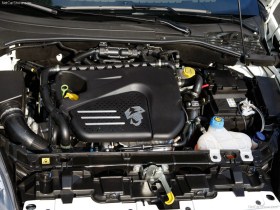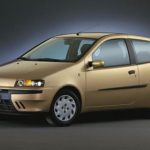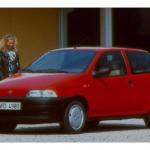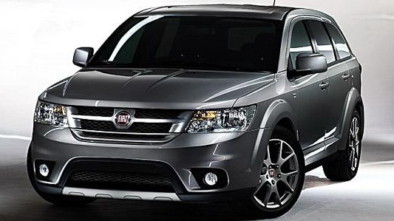Fiat Grande Punto 2005 - 2012 - used, experience, breakdowns
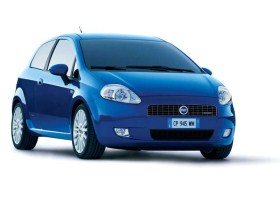
Fiat Grande Punto
Fiat Punto belongs to the category of small cars. In 1993, it was presented to the public by Italian carmaker Fiat Punto as the successor to Fiat Uno. In 1999, the second generation came on the market. The third generation named Fiat Grande Punto (Type 199) was introduced in 2005. Speak sales figures for its popularity at the beginning of 2006, it was the best-selling car in Western Europe.
The third-generation Punto (Fiat Grande Punto) is larger than the previous generation, longer than the second-generation Punto by 23 cm, and its wheelbase is increased by 50 mm. Four years later, it was time to rebuild the model. The car was called Punto Evo on this occasion. The Fiat Grande Punto remained on offer. In 2012, Fiat decided to further refresh the offer of the model, the model was withdrawn from the Fiat Grande Punto, Evo has been restyled. His name was also changed (his name was returned) Punto.
The Fiat Grande Punto is technically, the cousin of the Opel Corsa and in comparison to its predecessor Punto, completely redesigned. Only the engines were taken from the previous model. In 2005, it came with a three-door, a five-door version appeared in the spring of 2006. It soon succeeded and in early 2006 was the best-selling car in Europe. The design is signed by Giugiaro.
Although on paper, the Fiat Grande Punto represents the Fiat B-Class representative, it is a worthy alternative to many C-segment cars in terms of equipment, dimensions and features.
That the new FIAT is longer than 4 meters and is not so important, because now a large number of models in this class revolve around this figure (Clio 3, Kia Rio, Skoda Fabia, Seat Ibiza), but the point is that the Fiat Grande Punto is extremely nice and fun to drive. The proven City mode on the power steering is equally effective in the new Punt, extremely lightweight and of great benefit when parked. The novelty is that when you switch off the mentioned mode, you get an extremely direct and precise steering wheel that sends enough information to the driver at any time about what's going on under the wheels.
It is interesting that many believe that Fiat is not particularly reliable or durable, but the practice generally denies such prejudices. It is enough to look around and it will be easy to notice how many first-generation Puntos from 1993 are still there, and even Una, models from 1989. After all, Fiat has gained a reputation in the production of small city models that almost all mechanics will say that their mechanics are unbreakable, and simple and convenient to maintain. The Fiat Grande Punto is the latest, adult and most mature performance of Fiat’s little ones.
The Fiat Grande Punto has a common body with the Opel Corsa IV. It is available in two body versions: three and five door compacts. Also, there is a Fiat Punto sedan, it is sold as a special model named Fiat Linea.
Fiat Punto Evo
In 2009, the Fiat Punto Evo debuted, or the Fiat Grande Punto after the restailing. External changes are small but clearly visible. Inside is a brand new, beautiful instrument panel. The standard equipment package is also enriched (each Punto Evo has 7 airbags) and the engine range is refreshed.
Abarth Grand Punto
2007 Fiat revives the Abarth brand. Its models are created on the basis of Fiat, but they have their own logo, specific and unique style. The first new Abarth is the Abarth Grande Punto with a 1.4 turbo diesel giving 150 hp at 5500 rpm. A maximum torque of 206 Nm developed at just 2000 rpm, but 230 Nm produced at 3000 rpm. since driver activation of Sport mode.
Security
The Fiat Grande Punto received a maximum of 5 stars in the EuroNCAP passenger safety test, and 3 stars in pedestrian protection. The versions equipped with the strongest engines have ESP (Electronic Stability Program) and ASR (Anti Slip Regulation) built into the standard equipment package, and the same devices are offered as an option for other versions.
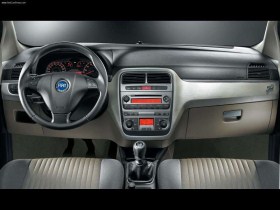
Fiat Grande Punto
After only a partially successful redesign of the previous generation Punto, FIAT decided to play all or nothing this time, at least when it comes to the look of the car. The combination of "snout" in retro style with rounded lines that seem to have been "stolen" from the sister brand from Milan (Alfa Romeo) is without a doubt a successful combination of some ancient times and modern trends in the automotive industry, thanks to Giorgetto Giugiaro.
The silhouette of the Fiat Grande Punto leaves everything breathless, as proof that Italian designers are a few light years ahead of the rest of the world, at least when it comes to the fluidity of the lines and the sense of beauty. Clearly, the flavors are not worth discussing, but it is just as crappy or, perhaps, almost foolhardy to claim that the Fiat Grande Punto is not currently the nicest car in the B segment.
Proof that within the FIAT concern there is a lot of "mixing cards" is this Fiat Grande Punto, which is, in fact, more Alpha and less FIAT. The conclusion lies in the fact that the Fiat Grande Punto behaves like the Alfa 147 in extreme situations, that is, that it hints to the driver in time with a slight drift of what will happen if he does not reduce the speed. The handling of this Italian car is simply amazing, so it simply entices you to drive at the limit, even when "only" 75 metal horses, diesel, are packed under the hood.
The interior of the Fiat Grande Punto does not knock off its feet like the exterior, but still deserves high marks, at least for the ergonomics and quality of the materials used. Admittedly, the finish has remained the same, so - Italian, but hand in heart, only advocates of perfectionist German or Japanese auto industry will notice. Upholstery is not all the same in general and fastened, so there is nothing of the highest quality, but the front seats are perfectly profiled and the position behind the wheel is almost ideal.
The shape of the steering wheel of a sporty small diameter, which lies perfectly in the hand, is almost ideal, and the thickness of the rim is enviable and ergonomically designed.
Fiat Grande Punto - engines
The large selection of engines at the Fiat Grande Punto guarantees that there is one for everyone's taste. Petrols are starting at 1200 cubic meters, which is quite enough for many, despite a little louder work. Still, a 1,4 8v is the more optimal choice, and it would be best to find a 1,4 16v. The average consumption is below six liters of unleaded petrol, and the engine is a little darker than the average user needs.
For those above average, Fiat has predicted a 1,4 T-Jet with a full 120 horses, and Abarth offers a version with as many as 153 horses. This is where the realm of real life ceases to exist and the Fiat Grande Punto turns into a real race car. Who matters most to consumption is a good choice of diesel engineers.
The 1,3-liter comes in two variants, with 75 and 90 hp. It is a decent choice, but if we were to buy it, we would be looking for a 1,9 engine with 130 horses. Yes it is very lazy until the turbines come on, but if you can handle the gearbox it won't disappoint you. The smaller consumes less than four liters, at least according to factory data, and the larger consumes about 4,7 per 100 kilometers.
Gasoline engines are certainly exceptional with the exception of the 77 hp unit with a capacity of 1,4 liters, which has problems with the failure of the camshaft position sensor. If you choose a 95 hp engine it is worth checking the oil level regularly, the 16-valve 1.4 engine sometimes consumes oil.
Diesel supporters generally choose the 1,9 liter volume variant, which provides good dynamics and is slightly cheaper to maintain than the 1.6 variant fitted with a diesel particulate filter. It is also worth noting that diesel units with capacities of 1.4 and 1.6 (in addition to problems with the DPF) should not cause major problems.
MultiJet aggregate 1.3 JTD
It was developed during the marriage with General Motors on the platform of a 1,3-liter diesel engine, sharing it with Opel Cors.
The common-rail unit with an extremely small volume of 1250 cc (with two camshafts and 16 valves), but also weighing only 130 kg, is sufficiently elastic and quiet. The main pain of diesel engines - restless engine operation - in this "miniature" diesel is alleviated by a new electronic unit (ECU) for which special software has been developed that controls the operation of the injectors. This is achieved by multi-phase injection with two pre-injections and then one main injection, which enables smooth operation of even a cold engine.
The software is tuned so that, if the ride is moderate and the crankshaft speed is constantly low, the injectors inject fuel three times into the cylinders during one stroke. However, when you firmly press the accelerator pedal, the central electronic unit stops pre-injection and injects all the fuel required for one stroke at a time.
Although the engine achieves only a modest maximum power of 75 hp at 4000 rpm, thanks to the torque of 190 Nm which is still available at 1750 rpm, intermediate acceleration is quite satisfactory. The unit develops power evenly, and the so-called "turbo hole" is almost not felt, although many German journalists claim the exact opposite, and you can guess why. In addition, the Punto is quite economical - in the test it consumed an average of only 5,8 liters of Euro diesel, although I drove a Fiat Grande Punto 1.3 JTD extremely fast.
It reaches a top speed of 165 km / h relatively quickly, and only then, due to excellent FIAT suspension, want a stronger engine under the hood, the Turin giant also has more powerful units, a 1.3 JTD with 90 hp and a variable turbine.
In the 1.3 Multijet Euro 5 version, the new common rail injectors on Euro 5 engines reduce consumption and CO2 by about 2%, while at the same time reducing harmful emissions. 1.3 The MultiJet is available in Euro 4 (75 and 90 hp) and Euro 5 (75 and 95 hp) versions, the other comes with a particle filter and Start & Stop. In addition, the turbo is performed via a fixed turbocharger geometry (75 hp) or a variable turbocharger geometry (90 and 95 hp). Euro 5 versions have the next generation of turbochargers which, in combination with the new second generation MultiJet injection system, provides the best possible turbo function at any engine operating level, with low torque and up to 25 percent more torque than the Euro 4 version.
1.4 MultiAir is a revolutionary new engine equipped with MultiAir technology. At the heart of MultiAir is a new electro-valve control system that provides reduced fuel consumption (through air control directly through engine intake valves without using gas) and harmful gases (combustion via control), as well as improved performance. MultiAir is a technology that is easily applicable to all gasoline engines and could potentially be developed for diesel engines.
Available in two power levels (105 hp and 135 hp). Compared to traditional gasoline engines of the same volume, the MultiAir engines provide significant increases in power and torque, as well as significantly lower fuel consumption and exhaust emissions.
Condition and temperament are attributes of the 105 hp 1.4 MultiAir engine. This engine is in the middle of the range where it represents the best choice. The 105 hp MultiAir is also Euro 5 compliant. Combined fuel consumption is only 5,7 liters every 100 km. The effect is excellent: from 0-100 km / h in 10.8 seconds and a top speed of 185 km / h.
The 135 hp 1.4 MultiAir Turbo guarantees performance and sporty temperament, a well-balanced car designed for customers who want good handling and fuel economy. Thanks to the turbocharger, the torque is 135 hp and provides outstanding acceleration and high response at all rpm, setting a new standard for gasoline engines. Choosing a new 135 hp speed and time browser to accelerate from 0-100 km / h is only 8,5 seconds. Excellent performance combined with respect for Euro 5's environment and modest fuel economy. This exceptionality is reflected in the particularly low CO2 emissions, with a combined fuel consumption of only 5,6 liters per 100 km each.
The Fiat Grande Punto power is transmitted to the front wheels via 5 or 6-speed manual transmissions or 5-speed automatic transmission.
All versions of the punt produced after 2005 have a simple and permanent suspension. Front - a typical McPherson layout. It's simple on the back. Because the springs and shock absorbers are mounted separately, the costs of eventual replacement are low and the prices of individual components are affordable. As in the Punto, the Fiat Grande Punto is equipped with an electric power steering.
Fiat Grande Punto, Punto Evo, Punto - Model history:
2005 Fiat Grande Punto Premiere.
2006. Line presentation (sedan based on Fiat Grande Punto).
2007 Production end for Fiat Punto II FL; Abarth Punto (offered as a separate brand).
2009. Launch of Fiat Punto Evo or Fiat Grande Punto after face-tightening.
2012. Introduced Fiat Punto (redesigned Fiat punto Evo).
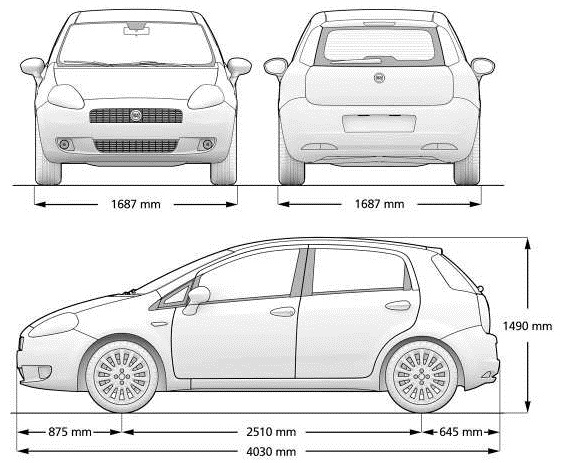
Fiat Grande Punto
Fiat Grande Punto - problems and breakdowns
The Fiat Grande Punto is not exactly the most reliable car you can buy. As with many other modern cars, electronic breakdowns also occur. It is usually caused by poor grounding contacts, connectors, and the like.
The interior is not quite as well assembled, so expect some creaking and tapping. And the door has its disadvantages with locking or falling over time (in hinges) so you cannot close without using force.
Common to small Fiat cars, oil leaks, and occasional problems with over-voltage electrical wiring and a whimsical main electronics are a long-standing infamous tradition that doesn't even pass the Fiat Grande Punto.
Engine 1.4 (77 hp) pulley position sensor failure. In gasoline engines, oil leakage is common (with increasing engine age) caused by the weakening condition of the gasket. Some drivers also complain about the need to refill frequently. If the consumption exceeds the standard of one liter per 1000 km, it is necessary to check the condition of the seal. It can also lead to engine overheating - which is the opinion of many drivers in Fiat Grande Punto.
Multijet diesel engines are the ideal solution until the Fiat Grande Punto exceeds one hundred thousand kilometers. Then you have to prepare for the costs resulting from turbocharger failure and damage to the floating flywheel and problems with the EGR valve or flowmeter.
Code 1.6 Multijet the engine is clogged DPF particulate filter.
In Multijet engines you should also constantly check the oil level (especially version 1.3 has very low oil capacity). Despite common failures typical of modern diesel engines, regardless of manufacturer, the Multimed diesel is one of the cheapest diesel maintenance engines on the market.
Engine 1.9 JTD engine jerks and hesitates when accelerating between 1800 - 2000 rpm, check the correctness of the EGR valve.
Drivers complain about problems with the gearbox selection, often with grease or lever replacement. Like engines, they often have a problem (with age) with oil leaks.
Floating flywheel problems with diesel engines.
One of the biggest, but also the most expensive, issues that plagued the "grande punto" was the one with the steering wheel, more specifically its cardan (wrist). The firing of the cardan was almost massive, so Fiat reacted by recalling this series of "grande puntas". The owners are invited to visit an official service center where this problem has been resolved at Fiat cost. Only manifested in the first series of "grand punta".
Typical and costly to repair a defect that affects most of the Fiat Grande Punto (inherited from its predecessor) is the failure of the Dual Drive system with an additional City driving support system.
It happens to damage the sensor on the power steering, after which the power assist is significantly weakened and the vehicle is much harder to drive. This problem can only be solved by replacing the sensor.
The foot brake weakens over time.
Loud brake noise when braking in the cold is a sign of rusty brake drums, usually helping to clean them, but sometimes they need replacement.
Suspension is another weak point of the Fiat Grande Punto. It produces a lot of noise while driving. However, again, you have to add that the prices of spare parts are really very low. The fastest is the problem of balls, shock absorbers and transverse stabilizers.
Its electronics are also not a strong point, so check it properly. It happens that water enters the electrical box (located in the engine compartment) and causes a short circuit, after which the electronics start to cause problems, report non-existent failures and the like. A problem can also be the installation of the front airbag sensor located in the front of the engine compartment. The contacts are slightly weaker with it, so if they do they will report an error in the airbags.
Engine startup problem, the instrument panel does not start when starting the engine, check the battery.
Belt and interior light sensor failures. In addition, there are climate failures. Often, clogged drainage of water from the air conditioning condenser - the symptom is water under the driver's carpet. It is known that Fiat often has too high installation voltage, which is why the light bulbs overheat.
Problems with front wheel fenders, causing sand and mud to enter the engine compartment.
Fiat Grande Puntoto has unaligned rear doors and body parts, faulty seals (especially in the rear window - water enters the car), cracking of unaligned plastic, windshield sprayers work poorly and easy damage to the paint. Car owners also complain about the malfunction of the seat system settings.
December 2007 Official recall because some Fiat Grande Punto has incorrect brake hoses fitted.
Fiat Grande Punto used cars - review
CONCLUSION
Fiat Grande Punto and Fiat Punto Evo have far more advantages than disadvantages. Impressive spaciousness and very good value for money.
In short, the Fiat Grande Punto is an interesting proposition for those looking for an exceptional urban soul car for a small price. Most of the errors we encounter in this model are trifles, but their intensity is sometimes high. The engines of the Fiat Grande Punto are durable, inexpensive and of interesting design.
Recommendation of similar texts:

Hi there, I am Mladen and I am an auto enthusiast. I started this blog years ago to help like minded people share information about latest cars, car servicing ideas, used car info, exotic cars, and auto technology. You will find helpful articles and videos on a wide variety of cars - Audi, Mercedes, Toyota, Porsche, Volvo, BMW and much more. Ping us if you have anything cool to share on latest cars or on how to make older cars more efficient, or just want to say hi!

